The Only Skill That Matters Now
There's this restaurant in Tokyo that doesn't have a kitchen. Well, it has a kitchen, but nobody cooks in it anymore.
It started when the owner got tired of explaining to his chefs how to make his grandmother's miso soup exactly right. So he built a machine that could make it perfectly every time. Then another machine for the rice. Another for the tempura. Soon, the whole kitchen was machines.
The chefs were furious. "This isn't cooking!" they said. "Where's the art? The soul? The years of training?"
But the owner did something unexpected. He turned his chefs into inventors. Instead of cooking the same dishes, they designed new ones the machines couldn't make yet. They became flavor architects, texture engineers, experience designers. The junior chef who could barely julienne vegetables? She invented a dish that exists in a new dimensions of taste.
The restaurant now has a three-year waiting list.
Every meal is something that didn't exist yesterday. The chefs don't cook anymore. They imagine, and the machines help them make their imagination edible.
"We forgot how to cook," he says, "so we could remember how to create."
So I've been thinking about hockey lately.
In particular, I’ve been thinking about Wayne Gretzky’s “Skate to where the puck is going to be, not where it has been.” quote.
We’ve all heard it before. Some of us added it to our LinkedIn headers. Maybe it’s in your pitch deck. Entire companies have been built around predicting the next location of that metaphorical puck.
But one big thing is forgotten when talking about this advice…
Gretzky could already skate.
What About AI Pucks?
There’s something different about AI pucks, sometimes you skate to where you're SURE the puck is headed, and then…
The puck just... doesn't go there.
Or worse, it zooms past where you thought it would stop, and you're standing there like you're waiting for a bus that already left. Remember when everyone was building "ChatGPT for X" and then suddenly the puck became autonomous agents? Yeah…
The Pucks Used to Move Slower
That Gretzky quote made way more sense in 2010.
Back then, pucks were predictable. They moved like pucks are supposed to move: in straight lines, affected by physics, obeying the laws of hockey.
2010: Mobile is going to be big
2011: Mobile was big
2012: Mobile was still big
2013: Yep, still mobile
2014: Mobile, but bigger screens now
2015: Same mobile, better cameras
You could build a mobile-first startup in 2010 and still be basically right in 2015. The puck was just... sliding across the ice. Like a normal puck. You could do the math.
The Breakfast Problem
Now, every morning, I wake up and check what changed in AI overnight:
Monday: "We need RAG systems!"
Tuesday: "Actually, long context windows make RAG obsolete!"
Wednesday: "Just kidding, we need RAG but different!"
Thursday: "Forget everything, we're all agents now!"
Friday: (muffled screaming into coffee mug)
A Brief Digression About Building Things
So look…
We've got these incredible AI coding agents now, right? They can write entire applications in seconds. They can debug faster than we can read. They can refactor code while we're still trying to remember what a factory pattern is.
And what are we building with them?
The same. exact. things. we've been building for twenty years.
Another SaaS app. Another CRUD dashboard. It's like we invented teleportation and we're using it to go to the same grocery store, just... faster.
I don't know what we should be building instead. But if the tools are this different, shouldn't the things we make be different too?
The Only Skill That Matters Now
Anyway, yeah, like I said earlier, Gretzky could already skate. He was incredibly agile. He could stop on a dime. Change direction mid-stride. His edges were so good he could literally dance on ice.
He didn't become great because he predicted the puck. He became great because he could actually get to ANY position on the ice and be open. The prediction was secondary to the skating.
That's where we are now. Except our skates are prompts. Our ice is context windows. Our edges are knowing how to talk to Claude or Gemini or whatever comes out next that makes both of them obsolete.
The Zamboni Situation
You know, there was another person that helped make sure the Great One was going to be able to skate to where the puck is going to be: The Zamboni driver.
They come out between periods and make sure the ice is smooth. Make sure we can keep skating fast. Nobody cheers for the Zamboni driver. But without them, eventually we're all just stumbling around on choppy ice, wondering why we keep falling down.
One type of thing we need to be building with AI are Zambonis. Tools that smooth out the surface. Ways to understand what these agents are actually building for us.
Like, the other day I was thinking about how hard it was to build a mental model of the apps you’re building these days. Things change so fast and mutate so quickly now that you don’t have time to fully internalize how things work. Chad Fowler talked about it on The Ruby AI Podcast last week: your brain used to be able to relax while you did the boring parts like typing. I think that’s also when we used to process and build our theories of our programs.
So… I built this prototype to explore ways to solve that. (Or rather, I asked Bolt to build this prototype while I ate peanut butter sandwich crackers.)
It's a visual, 2d, app explorer. I’m thinking you would point it at your git repo and suddenly you can see it like a map. Zoom out to see the whole architecture or browse by routes. Zoom in to see individual functions or controllers or models. Pan around like you're in Google Earth but for code. Get a visual indicator on the different elements when a commit has modified them. Start with AI summaries of the code, but be able to drop down into the details if you need to.
Does something like this seem feasible? Know anyone who is trying to build this? If we’re going to be doing product-level acceptance on our apps instead of reviewing mountains of code, we’re going to need to SEE our applications. Like, really see them.
Here, check it out and let me know what you think.
One way we can ensure we’ll be able to keep skating fast is building the Zambonis. Making the tools that help us navigate this weird new ice where the surface changes every time we blink.
A Meditation
So yeah… instead of skating to where the puck might be in a year...
What if we just got really good at skating?
Like, what if we got so good at skating that when the puck shows up (wherever it shows up) we could just... go get it?
What if adaptability is the product?
The Choice That Isn't Really a Choice
Here's the brutal, uncomfortable, urgently true thing…
(deep breath)
If your company isn't giving you the tools to learn to skate like Claude Code or Amp subscriptions, API credits, time to experiment with AI coding, and so on, you're not actually employed. You're in hospice. They're just keeping you comfortable while you become obsolete.
You won't be replaced by AI. That's the wrong fear. You'll be replaced by someone who learned to skate when you were still arguing about whether the ice is real.
It’s important to find a company that gets it. That throws money at making you faster. That understands we're not playing hockey anymore (we're playing something new, where the rules change mid-game and the only constant is acceleration).
Or don't. Stand there in your street shoes, explaining to everyone how you've been coding for twenty years and these kids with their AI tools don't understand real programming.
The puck doesn't care about your experience. It's already zipped by you while you were reading this sentence.



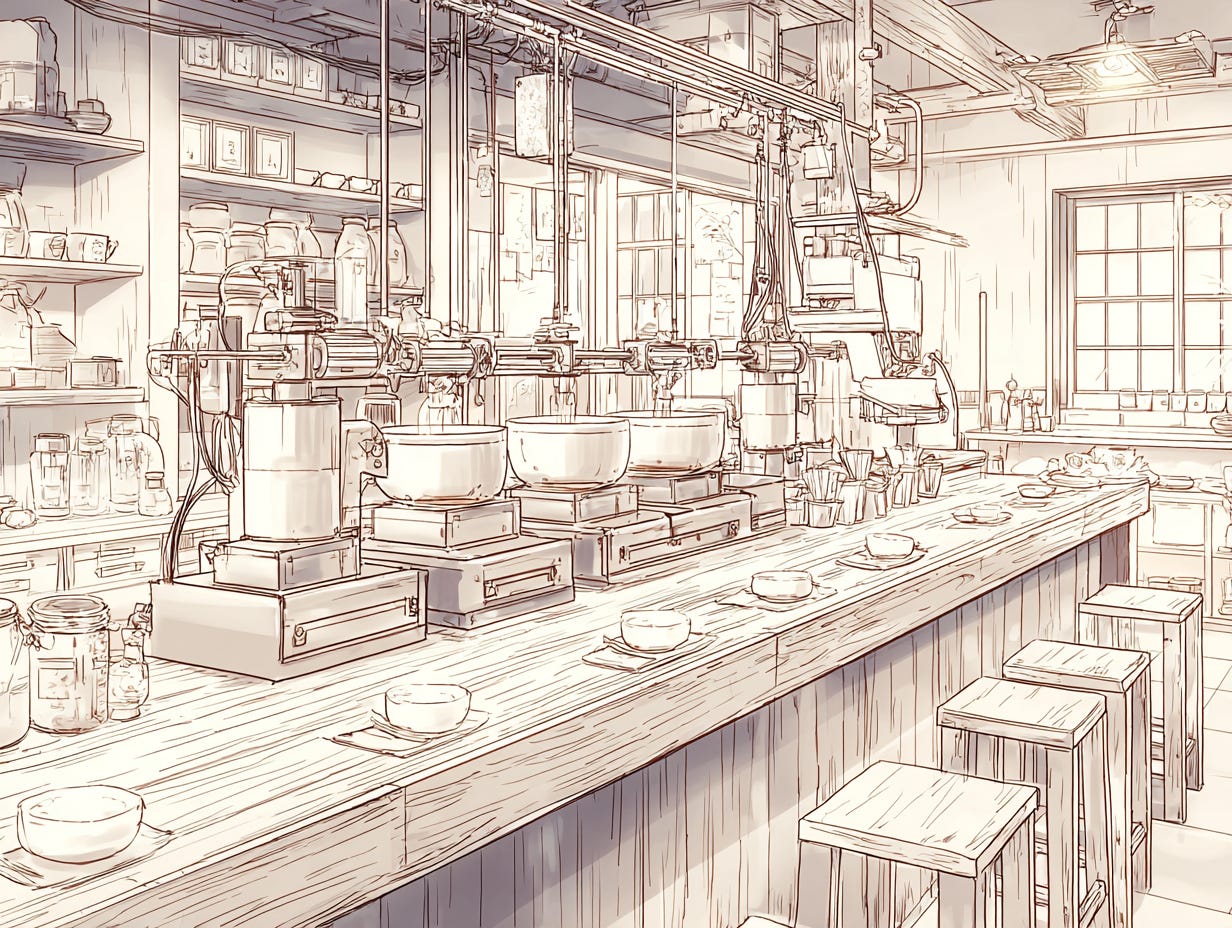
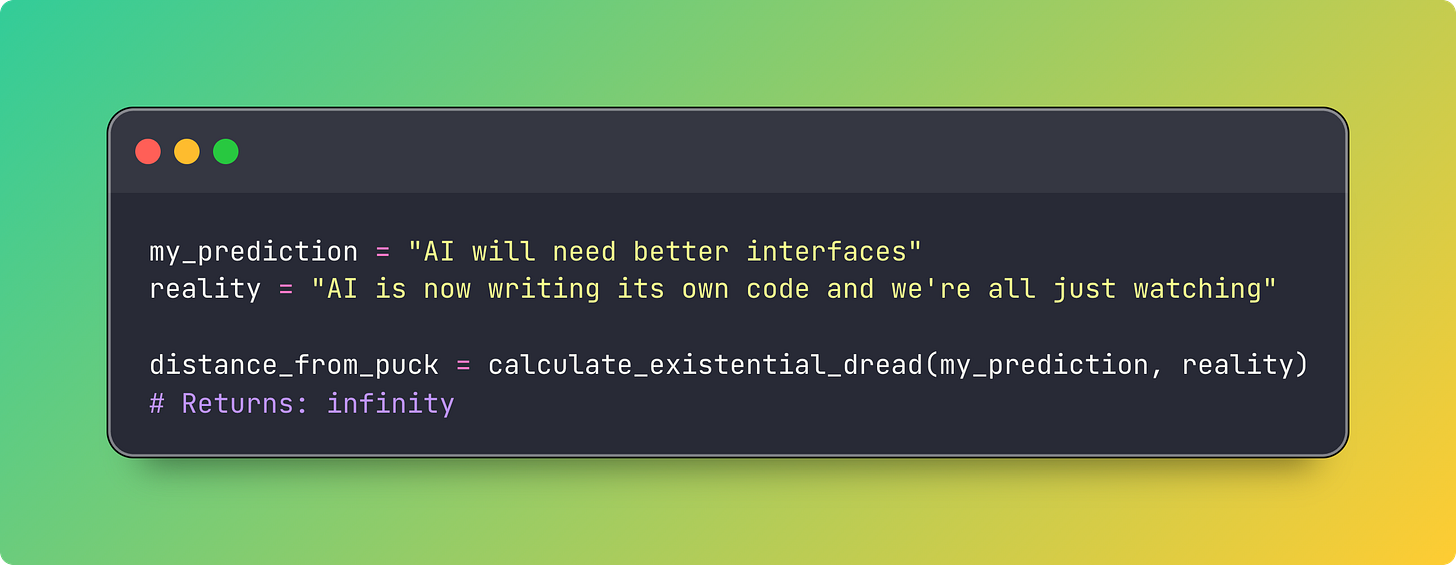
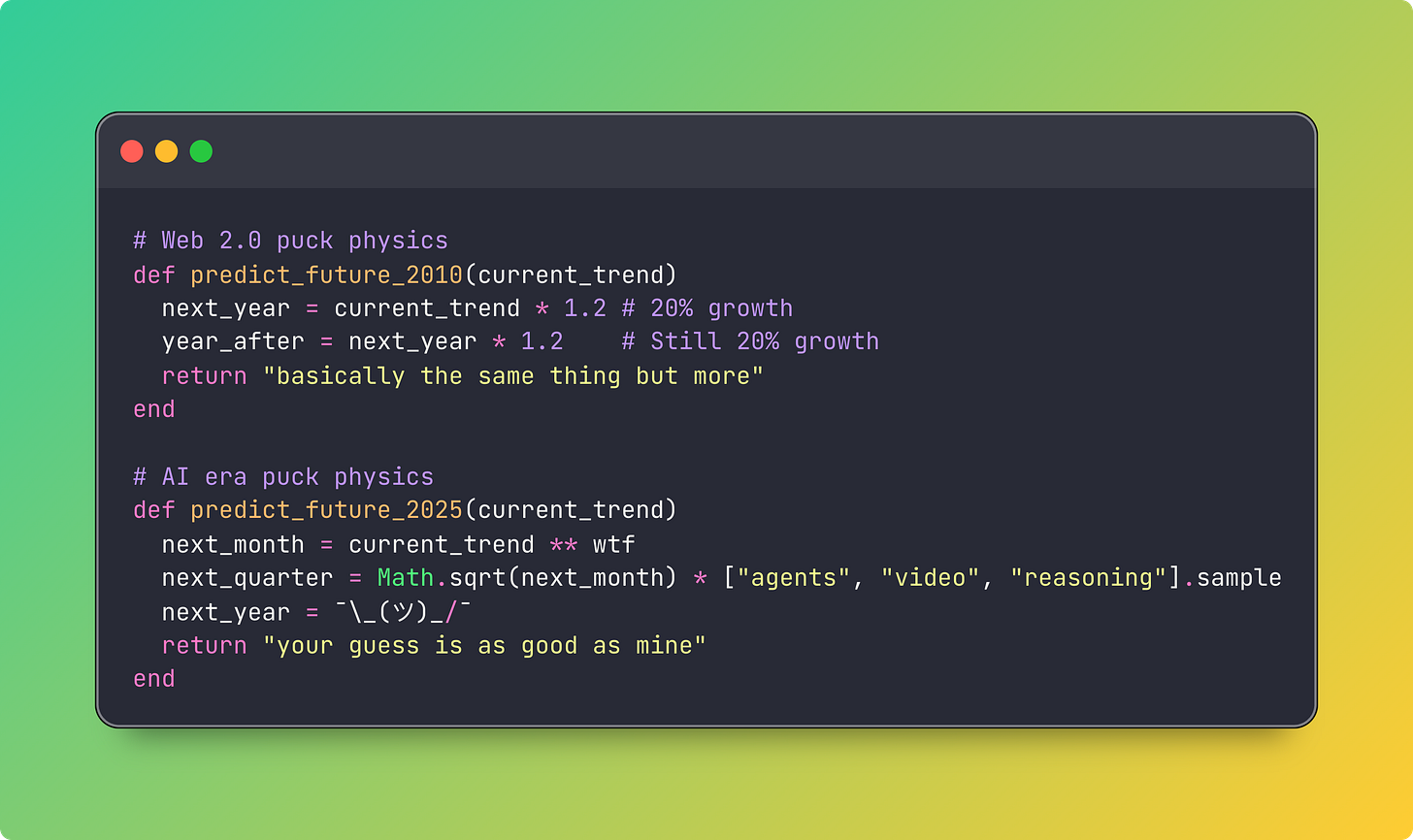
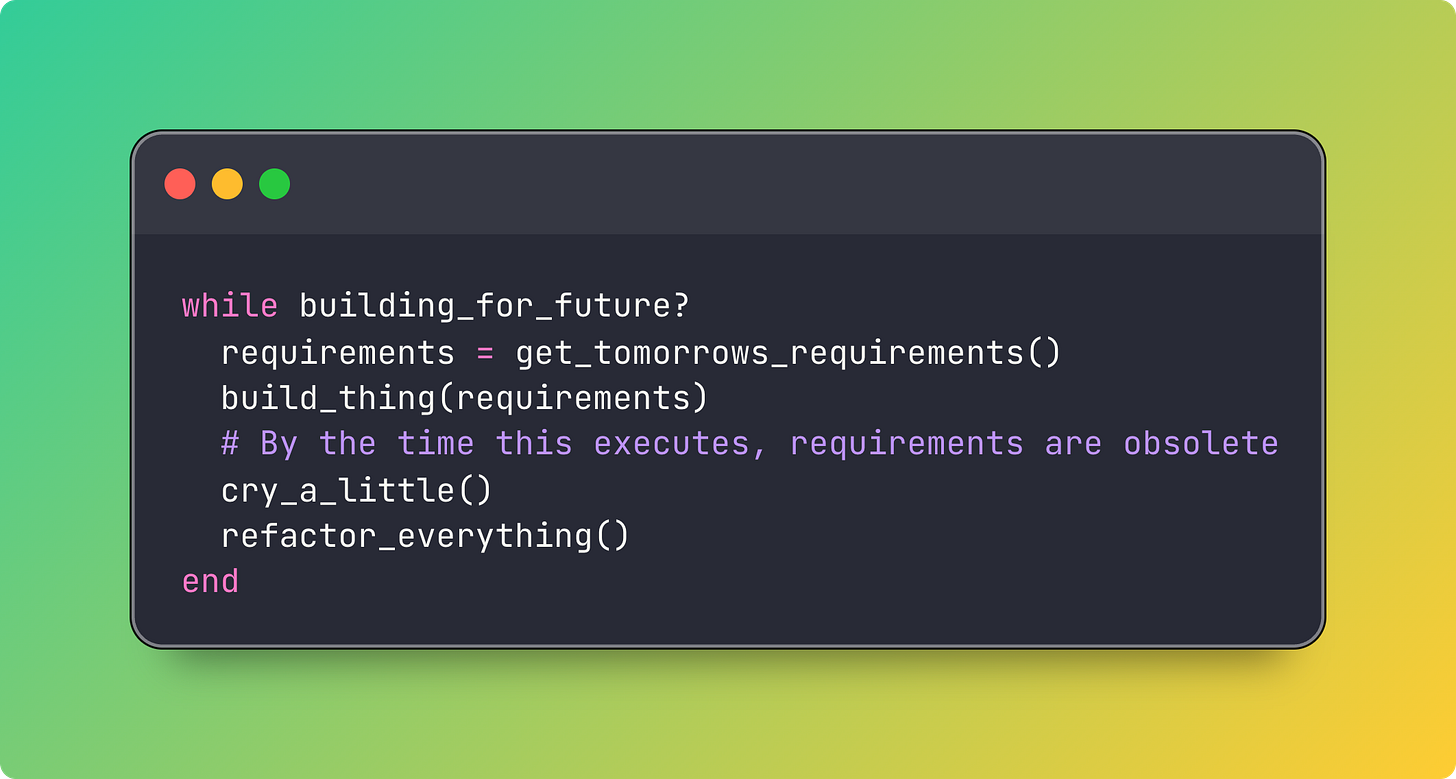
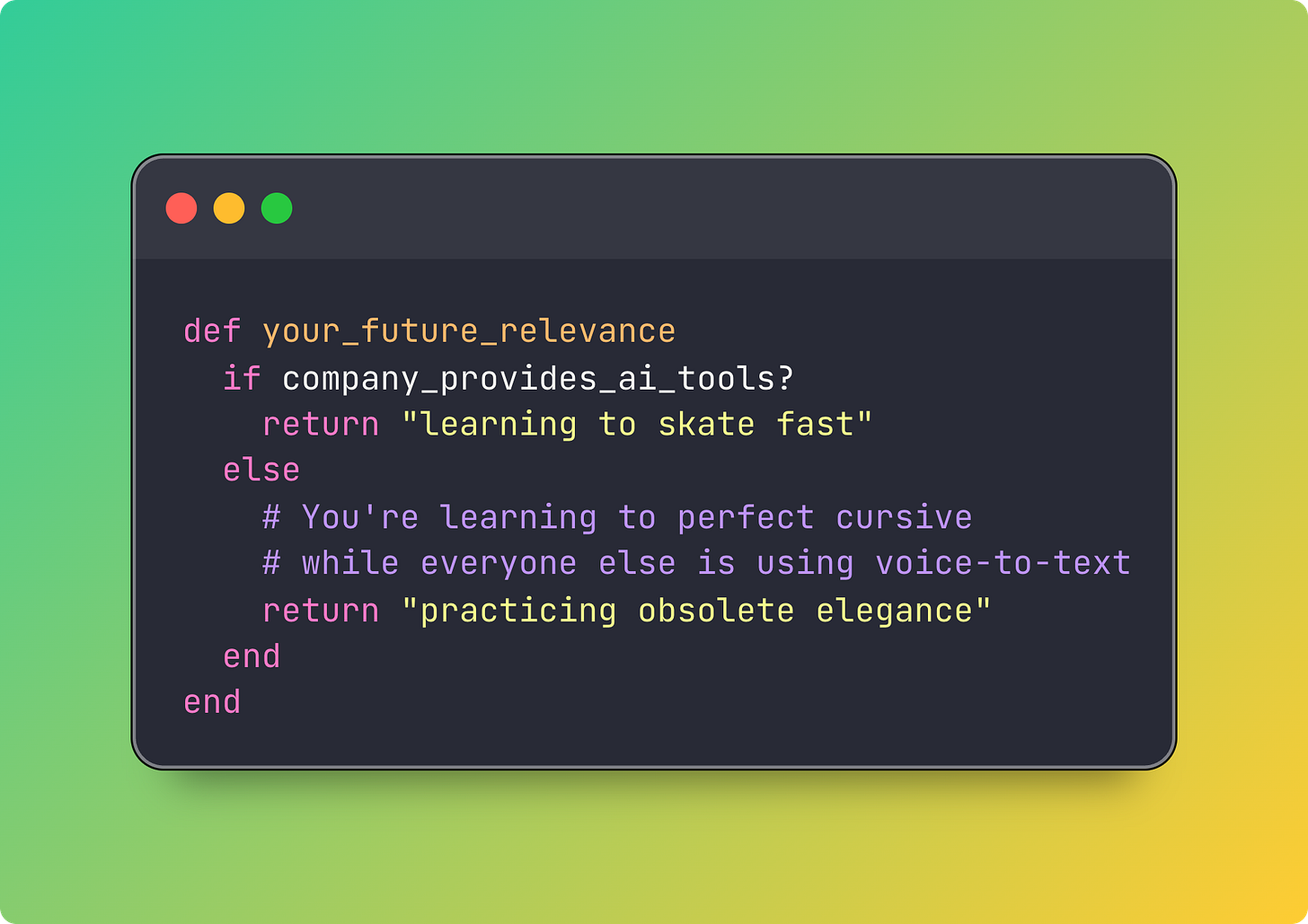
Many competent people believe experience still outweighs AI-generated code…likely true for now, especially in large enterprises. But that edge won’t last, and relying on inexperience with AI code generation as a long-term moat is a losing bet.
The application explorer is a great idea. I'm in the same place as you. My apps are changing as fast as my ideas go and I totally loose track of the details. I need to trust the llm as I go, but I know at one point I need to take a day to assess, clean up and refactor so the application grows in a healthy way.